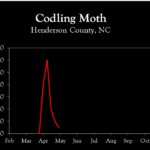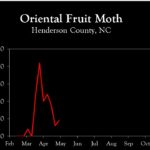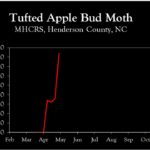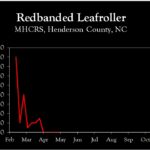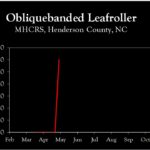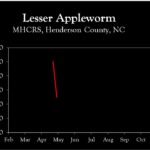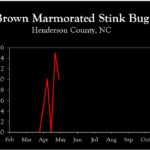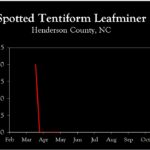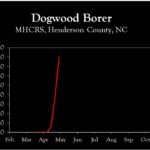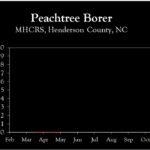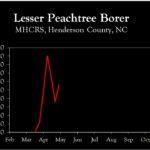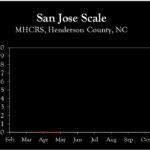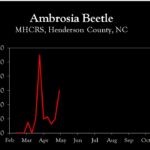WNC Orchard Insect Pest Populations – May 24, 2022
go.ncsu.edu/readext?866701
en Español / em Português
El inglés es el idioma de control de esta página. En la medida en que haya algún conflicto entre la traducción al inglés y la traducción, el inglés prevalece.
Al hacer clic en el enlace de traducción se activa un servicio de traducción gratuito para convertir la página al español. Al igual que con cualquier traducción por Internet, la conversión no es sensible al contexto y puede que no traduzca el texto en su significado original. NC State Extension no garantiza la exactitud del texto traducido. Por favor, tenga en cuenta que algunas aplicaciones y/o servicios pueden no funcionar como se espera cuando se traducen.
Português
Inglês é o idioma de controle desta página. Na medida que haja algum conflito entre o texto original em Inglês e a tradução, o Inglês prevalece.
Ao clicar no link de tradução, um serviço gratuito de tradução será ativado para converter a página para o Português. Como em qualquer tradução pela internet, a conversão não é sensivel ao contexto e pode não ocorrer a tradução para o significado orginal. O serviço de Extensão da Carolina do Norte (NC State Extension) não garante a exatidão do texto traduzido. Por favor, observe que algumas funções ou serviços podem não funcionar como esperado após a tradução.
English
English is the controlling language of this page. To the extent there is any conflict between the English text and the translation, English controls.
Clicking on the translation link activates a free translation service to convert the page to Spanish. As with any Internet translation, the conversion is not context-sensitive and may not translate the text to its original meaning. NC State Extension does not guarantee the accuracy of the translated text. Please note that some applications and/or services may not function as expected when translated.
Collapse ▲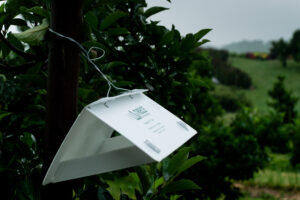 Codling moth remains the key insect of concern at this time. Egg hatch degree-day (DD) model accumulations range from about 440 DD in Henderson County to 600 in Cleveland County. While first-generation codling moth can potentially be a concern up until 800 to 1000 DD, depending on population density, the most critical period for protection is typically between about 300 to 800 DD. Rain, cool nights and moderate daytime temperatures over the next 4 to 5 days will likely suppress moth activity.
Codling moth remains the key insect of concern at this time. Egg hatch degree-day (DD) model accumulations range from about 440 DD in Henderson County to 600 in Cleveland County. While first-generation codling moth can potentially be a concern up until 800 to 1000 DD, depending on population density, the most critical period for protection is typically between about 300 to 800 DD. Rain, cool nights and moderate daytime temperatures over the next 4 to 5 days will likely suppress moth activity.
Tufted Apple Bud Moth (TABM): In lower elevation orchards (<1000 ft) we are approaching the wide window of opportunity for tufted apple bud moth control. Control of this leafroller is easily achieved with one application of a recommended insecticide anytime between 800 and 1200 DD after biofix. DD accumulations range from about 590 in Henderson County to 800 in Cleveland County. In lower elevation orchards control of this generation can be achieved with an application anytime between now and the first week of June. In Henderson County, where TABM populations are generally the highest in this region, the window for control is expected to be during the first two weeks of June. For those monitoring TABM activity, it is important to remember that egg laying does not begin until pheromone trap captures peak, so do not be concerned about high trap captures at this time.
Learn more about southeastern apple insect pests at the Apple Insect Management page.
2022 Average Weekly Trap Captures
| HENDERSON COUNTY | |||
| Insects per trap | |||
| May 9 | May 16 | May 23 | |
| Codling moth | 4.0 | 2.0 | 1.0 |
| Oriental fruit moth | 9.0 | 3.0 | 4.5 |
| Tufted apple bud moth | 16.0 | 18.0 | 42.0 |
| Redbanded leafroller | 0.0 | 0.0 | 0.0 |
| Obliquebanded leafroller | 0.0 | 0.0 | 6.0 |
| Lesser appleworm | – | 10.0 | 5.0 |
| Apple maggot (abandoned and research orchards) | – | – | – |
| Brown marmorated stink bug (commercial) | – | – | – |
| Brown marmorated stink bug (unsprayed) | 0.0 | 0.0 | 1.0 |
| Spotted tentiform leafminer | 0.0 | 0.0 | 0.0 |
| Dogwood borer | 7.0 | 38.0 | 80.0 |
| Peachtree borer | 0.0 | 0.0 | 0.0 |
| Lesser peachtree borer | 33.0 | 18.0 | 28.0 |
| San Jose scale | 0.0 | 0.0 | 0.0 |
| Ambrosia beetle (all species) | 1.3 | 2.0 | 6.3 |
*Note that these averages illustrate only the timing of insect emergence and fluctuations in populations, and are not representative of population levels in any given orchard. The only way to have an accurate assessment of an individual orchard’s populations is to set up traps in that orchard.
2022 Accumulated Degree Days
| HENDERSON COUNTY | ||||
| May 9 | May 16 | May 23 | ||
| Codling moth (Biofix: April 22) | 200 | 296 | 429 | |
| Oriental fruit moth (Biofix: April 12) | 390 | 519 | 686 | |
| Tufted apple bud moth (Biofix: April 27) | 193 | 321 | 488 | |



